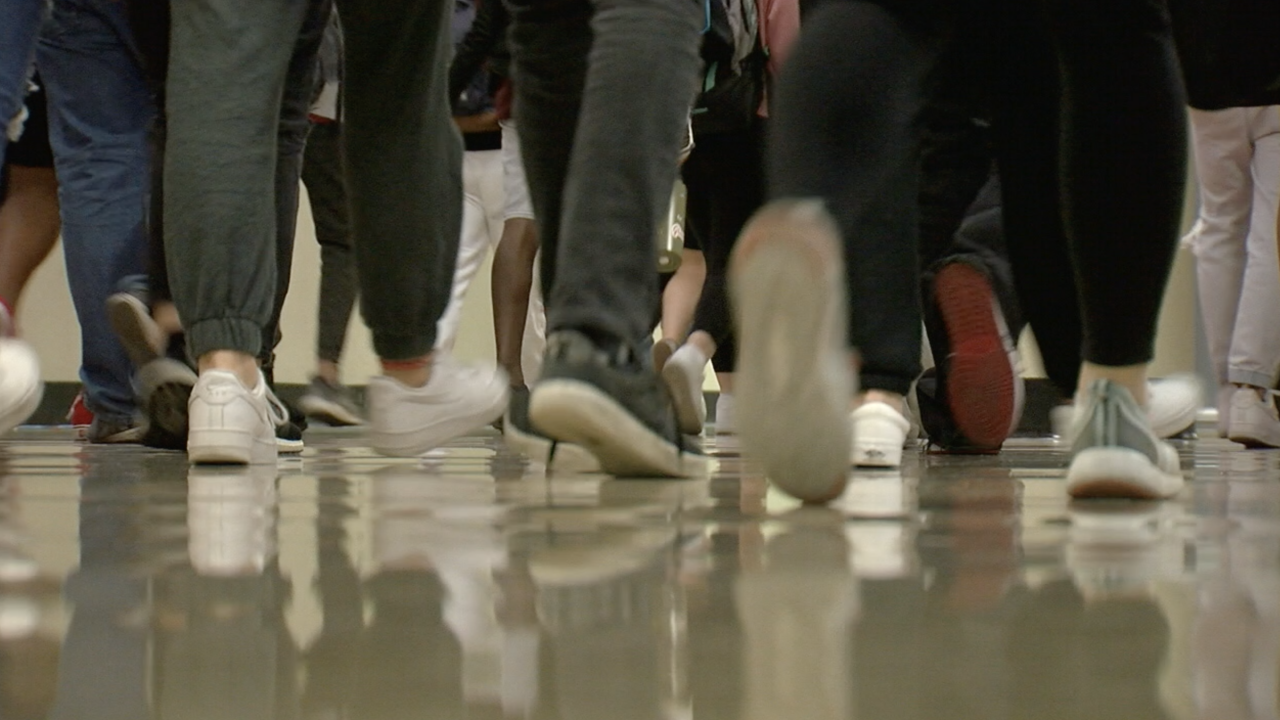SOUTHWEST FLORIDA — If you've been anywhere near a tv or a phone over the last year, then you've probably noticed that the volume on the conversation about diversity seems higher than ever.
Especially when it comes to things like policing, leadership and healthcare.
But what about schools?
When you think of your local schools do you think about diversity?
The folks at the Leroy Collins Institute in Tallahassee do.
In 2017, they took a look at the level of diversity in our state schools and found that following desegregation efforts in the 1960s, 1970s, and 1980s, diversity in Florida schools changed.
"This isn't unique to Florida, this is a national trend," said Carol Weissert the Institute's Director, "The federal government and the federal courts anyway are no longer really pushing local governments to make sure there isn't resegregation or there isn't this going back to the 1960s."
She says without that federal pressure school choice and ultimately the racial make-up has largely been left up to parents and school districts.
"One of the issues is you're dealing with parents and parents want to make sure that they send their kids to the best schools and sometimes the best schools, what we have pretty much evidenced is the best schools are not the ones that are these heavily segregated schools," said Weissert.
The institute categorizes "heavily segregated" schools as those where at least 90 percent of the student population is minority.
And here's why they say you should care about the level of diversity in local schools, even if you don't have kids.
"There have been a lot of sociological studies that show that kids that are in diverse classrooms really make better citizens," said Weissert, "They're more empathetic because they understand that there are people who have different backgrounds and look differently from what they do."
FOX 4 wanted to see how a few of our local districts stacked up and here's what we found.
In Charlotte County, there were no schools that met the "heavily segregated" mark.
But we did find a few schools where more than 85 percent of students identify as "White."
School leadership says those schools reflect the community's demographics.
"We're like a microcosm of our community," said Michael Riley, Charlotte County Public Schools Spokesman, "It's a predominantly white community. It's like, I think 84 percent White, 6 percent Black and 8 percent Hispanic and 2-3 percent others."
The district says they're also very aware of the need to expose their kids to different cultures and they do so through what they call "culturally responsive" teaching.
"The first thing you've got to do in bringing that in is you've got to involve the students. You've got to know about them, you've got to learn about them, you've [also] got to involve to parents, the same thing, you do that by inviting them in for conferencing for programs," said Riley.
Collier County Schools didn't respond to our request for an interview in time for broadcast.
But we found that the district had two schools that fit the category for "heavily segregated," with more than 90 percent of students identifying as "Hispanic."
Both schools were located in Immokalee, FL.
According to census data, Immokalee's population is more than 72 percent Hispanic. On top of that each year the area also welcomes an influx of mostly Hispanic migrant families, which likely also contributes to those numbers.
And then there are Lee County schools.
In Southwest Florida's largest school district, there weren't any schools that met the "Heavily segregated mark" either... But a few came close...With five schools that currently have a mostly "Hispanic" student body.
Leaders for the district say part of that can be attributed to recent growth in the Hispanic population in Lee County, but it's definitely something they're monitoring.
"There's been a decent amount of studies on critical mass and whether there's a certain percentage of students that are needed to access either the benefits of diversity or the harmful effects of diversity, I don't think we're that numerical range in terms of what we're trying to assess," said Adam Molloy, the Lee County Schools Community Engagement Coordinator.
School leaders add that by using a lottery system for school enrollment and offering a variety of programs at the high school level, they've seen a wider spread of diversity among students at each school.
They also work to promote diversity through the curriculum.
"Infusing a lot of our own history and some of the major events in our own local history that center on diversity, that center on desegregation and the impact of that," said Molloy.
They also provide faculty and staff with diversity training.
"So that's understanding how do you overcome some of your preconceived notions about individuals and people and circumstances to be able to reach them? And understand them? And appreciate their story, appreciate their narrative and appreciate their full potential?" said Jarrett Eady, the Lee County Schools Director of Diversity and Inclusion.
When it comes to improving on levels of diversity within schools, FOX 4 has found that that school districts, to a degree, are at the mercy of the demographics they serve.
And it's why school leaders tell us that to create true change other groups must join in on the conversation.
"These are larger conversations that have to happen on a city, local and regional level to make sure that we have all of our voices at the table and people have access and opportunity to all of the richness our community provides," said Eady.
And the Leroy Collins Institute agrees.
"I think there's a tendency to say 'Oh it's the school district.' But really it's the city, it's the county, it's the state," said Weissert.


